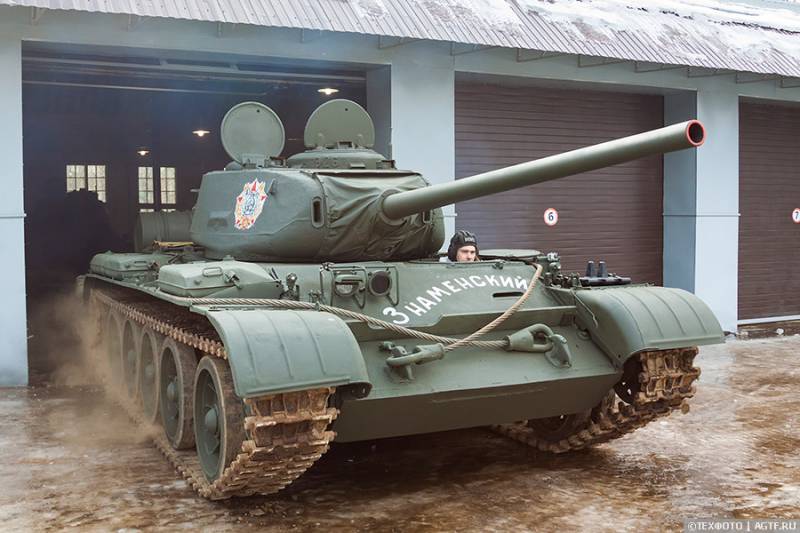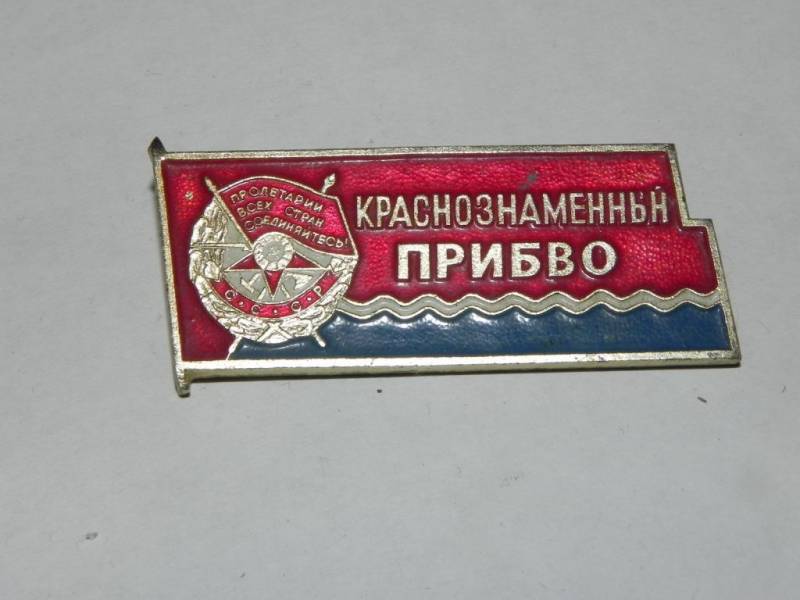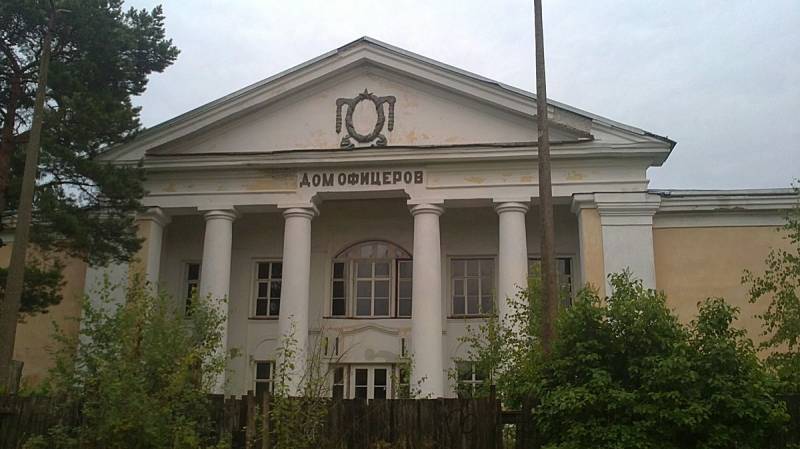Zampotekh's history: the Baltic military district
From Siberia to Europe
After school, the choice fell on the Omsk tank-technical school due to the proximity and the actual absence of another alternative for a native of the Siberian hinterland. In 1967, I managed to graduate from college with honors, but not a round honors student - the average mark exceeded 4,5. This made it possible to choose a military district for service, and initially I was thinking about the Far East and Transbaikal. Now, even in a nightmare, there will not be an opportunity to voluntarily choose such distant garrisons, and even in such extreme climatic conditions. But to me, a twenty-one-year-old lieutenant, then it seemed quite a worthy option, not devoid of romance. Surprisingly, everything was decided without me, and the place of service was the Baltic Military District. Not otherwise, as the company commander contributed - it was not in vain that we played table tennis with him.
Deputy Commander tank companies for the technical part, or in abbreviated form ZKTCH, "zampotekh" - it was in this position that they were waiting for me in Tallinn. A little about the specifics of the profession. In the Soviet Union, tankers were trained in eight tank schools at once, and only two of them were technical - in Omsk and Kiev. Command teams were located in Kharkov, Tashkent (more precisely in Chirchik), Chelyabinsk, Ulyanovsk, Kazan and Blagoveshchensk. By the way, in the post-Soviet space, educational institutions that trained tankers remained only in Omsk, Kazan and the Uzbek Chirchik. The specifics of the training of the future deputy engineer is clear - a minimum of operational and tactical training and a maximum of studying the material part with the peculiarities of operation and repair. In the troops, graduates-techies did not rise above the deputy commanders of subunits. But, in my deep conviction, any deputy engineer, in which case, will successfully fulfill the role of commander. In peacetime, the deputy chief was responsible for “technical condition, correct operation, timely maintenance and high-quality repairs, as well as correct storage and maintenance of equipment". In addition, for the technical training of unit drivers.
The Baltic Military District, which I was sent to in 1968, has never been anything militarily outstanding. The main forces were concentrated in the Kaliningrad region - Latvia, Lithuania and Estonia were limited to a more modest contingent. A typical second-rate district, on the territory of which, in the overwhelming majority, reduced formations and units were deployed. This meant that they were equipped with weapons and equipment according to the state of war (with the exception, as a rule, of trucks), and the officers were 70 percent. NCOs and privates — by 10-15 percent on the strength. All the rest worked not far from the points of deployment "in civilian life", but in the army they were waiting for a specific tank, weapon, etc. The corresponding mobilization documentation was kept, usually under the heading "Top secret". I really did not like this mobilization work!
The troops of the Baltic Military District were mainly intended for operations in the second echelon, since it took time for them to be replenished to the state of war and military coordination. This system existed due to the lack of funds for the maintenance of full staff.
Klooga
The order, which was given to me back in Omsk, indicated - Tallinn. I was glad - I was lucky to serve in the capital! After leaving my young wife after the wedding (she needed to sort things out at the institute), I arrived in Tallinn alone, with a suitcase that could hardly fit my military uniform, and with a cape rolled up like a roll and hanging on a strap over my shoulder ...
At the metropolitan railway station I turned to the first policeman I met, and he explained to me for a long time in very broken Russian where the division headquarters was. Explained well, since I finally got to the place. The path lay along the streets of the Old City - historical parts of Tallinn. I walked with the feeling that I was on the set of some kind of historical film. One must think what confusion I experienced, an ordinary Siberian village guy, at the sight of such splendor. In the world in which I was born and lived until now, nothing like this has happened.
The division headquarters was located on one of the old narrow streets, in an old building. The local personnel officer, I must say, disappointed me. It turned out that the company, of which I was supposed to become a technical engineer, was not in Tallinn, but in a small village 40 km away. The so-called Matrosov motorized rifle regiment, named after the Hero Alexander Matrosov who fought in it, was stationed there, who covered the machine gun of the enemy bunker with his chest.
It was necessary to go to the duty station by commuter train along picturesque, unusual terrain for my eyes: pine trees, boulders, well-groomed farms among the same well-groomed fields. On the train, I felt the bitterness of the first loss: admiring the local beauties, I completely forgot about the cape, which remained on the shelf above the carriage window. I got off the train and my cape left. If you know how rainy the Baltic weather is, you will understand the bitterness of loss.
The village was called Klooga. Now it is known, first of all, due to the memorial to the German concentration camp, where in 1944 up to 2 thousand prisoners were shot. At the end of the 60s, an obelisk, a fence stood on the site of the tragedy, everything is neat and well-groomed, however, like everything in the Baltic States. The population of the village did not exceed a thousand people, there were very few Estonians, mostly stationed soldiers of the Soviet Army lived.
Arriving at the regiment, I, as expected, introduced myself to the regiment commander by the last name - such a coincidence must happen - Fedorov. A colonel, a front-line soldier, kindly gave me my first parting words in the officer's service. Over the years, I have forgotten their content.
I took over the post of deputy technical engineer of a separate tank storage company, divisional subordination. The entire staff of this company consisted of the company commander, Captain Kryukov, platoon commander of Art. Lieutenant Shevchuk and six soldiers. Shevchuk with the soldiers went on guard a day later, so his first words at our meeting were: “Well, now I am twice less likely to intercede as the chief of the guard!". This is how my service began: 5-6 times a month - guard service, and the rest of the time - work on equipment on a par with soldiers.
Tank storage company
A tank company was called a company only on paper - in fact, it included 30 T-44M tanks in long-term storage. I did not know about the existence of such a brand of tanks before arriving here. At that time I had no experience in operating different types and brands of equipment. The school practiced on the T-55, which was then one of the best. There were also T-62s at that time, but these brands did not differ radically from each other regarding my technical profession. The T-44M is a transitional model from the T-34 to the T-54, with a chassis and transmission from the T-54, and the turret and cannon - almost exactly the same as the T-34. The tanks were sealed with a special waterproof fabric and loaded with a lot of silica gel to absorb moisture inside the hull. The gluing was completely sealed. The shelf life of these tanks was 5 years, after which they were supposed to be re-preserved, change the oil, and replace a certain number of durits and pipes. In addition, it was required to select one control tank and go on it for the routine 5 kilometers in order to check the operability of the combat vehicle. No sooner said than done. The tank was refueled, started up and sent for a test run. But the drivers who served in the storage company lacked driving skills. As a result, a conscript soldier ran into a roadside boulder with his front right sloth and stood rooted to the spot. The technical analysis on the spot gave an amazing result - the chassis of the tank remained intact, but the teeth of the final drive shaft of the transmission crumbled. A council of divisional technicians was assembled and decided that the reason was the fatigue of the metal - after all, the tank was released more than twenty years ago. By the way, in my practice as a technical engineer, I have never seen such incidents. This incident once again reminded of the combat readiness of the mothballed equipment. At the same time, the T-44Ms were quite suitable for military operations in secondary directions, such as the Baltic states.
House of officers
A little about the living conditions of the young lieutenant. As a family man, I was provided with housing - an apartment in a semi-detached Finnish house, which had two rooms and a small kitchen. Heating - stove. Water is outside, in a pump. "Conveniences" are also in the yard. These houses, the walls of which were two plank layers, between which slag was once poured for insulation, and the outside were sheathed with tiles from a particle-cement mixture, were dilapidated and held almost no heat. Fortunately, the winters in Estonia, although snowy, were by no means warmer than those in Siberia. And when the stove was fired, it was warm in the house. In a tiny kitchenette there was a stove-stove and a gas stove with bottled imported gas. We took these conditions for granted. They gave us, newlyweds, an iron bed and two stools from a military unit for use. And our first family purchase happened in the form of an ottoman for 60 rubles. To understand its importance and value, I think it is worth pointing out that my monthly salary was 135 rubles.
One of the main (if not the most important) attractions of the village was the Officers' House, which was a beautiful white building with a magnificent front porch decorated with columns. A typical monument of the Stalinist Empire style. The entire cultural life of the village was concentrated in the House of Officers: circles worked, films were shown. There was a billiard room with two tables. Quite often, popular metropolitan artists came to us for creative meetings. For example, Stanislav Lyubshin, Mikhail Ulyanov, Lyudmila Chursina, Mikhail Pugovkin and others. This really brightened up life, in general, a provincial Estonian town.
In modern Estonia, the Officers' House is obviously regarded as a monument to the Soviet "occupation" - it is surrounded by a dilapidated fence, the windows are broken, and the facade is stained with graffiti in some places. Not at all like the famous Baltic zeal and accuracy. However, this is not only the way Estonians treat the Soviet legacy in such a barbaric way - in the vicinity of Klooga, the knights' manor (manor house) of the late XNUMXth century is gradually being destroyed.
Let's go back to 1968, to the Officers' House, where festive feasts were held for the families of the officers and warrant officers of the garrison on major holidays. Calico, autumn balls were organized for women, where they could take part in contests for the best outfit, sewn with their own hands. They sat at the table in accordance with their belonging to a particular unit, and dances to the accompaniment of an orchestra - in the common hall.
And so, on the very first such evening, on November 7, 1968, Lieutenant Shemyatkov, a platoon commander from the 3rd separate tank battalion (3 ot), came up to me and asked: “When will you come to our service?“I did not understand the question, but he continued, they say, an order has already arrived at me on the appointment of a deputy chief technical officer of a tank company of this battalion. I, of course, did not take his word seriously, but right after the holiday, I was given an order in the combat unit to move to this same 3 ot. This battalion was special for several reasons: 1) it was deployed to a full staff, which is rare for the Baltic states; 2) reported directly to the command of the PribVO; 3) medium 36-ton tanks were able, by means of additional equipment, to sail on their own through the sea at a distance of at least 100 km with waves of no more than 3 points. There were only four such unique units in the Soviet Union - in the Far East in Slavyanka, in the North Navy near Murmansk, in the Estonian Klooga and on the Black Sea.
So, three months after arriving at the place of service, I, having walked three hundred meters and without leaving the checkpoint, went to another part, unique in its own way. But that's a slightly different story.
Продолжение следует ...



Information